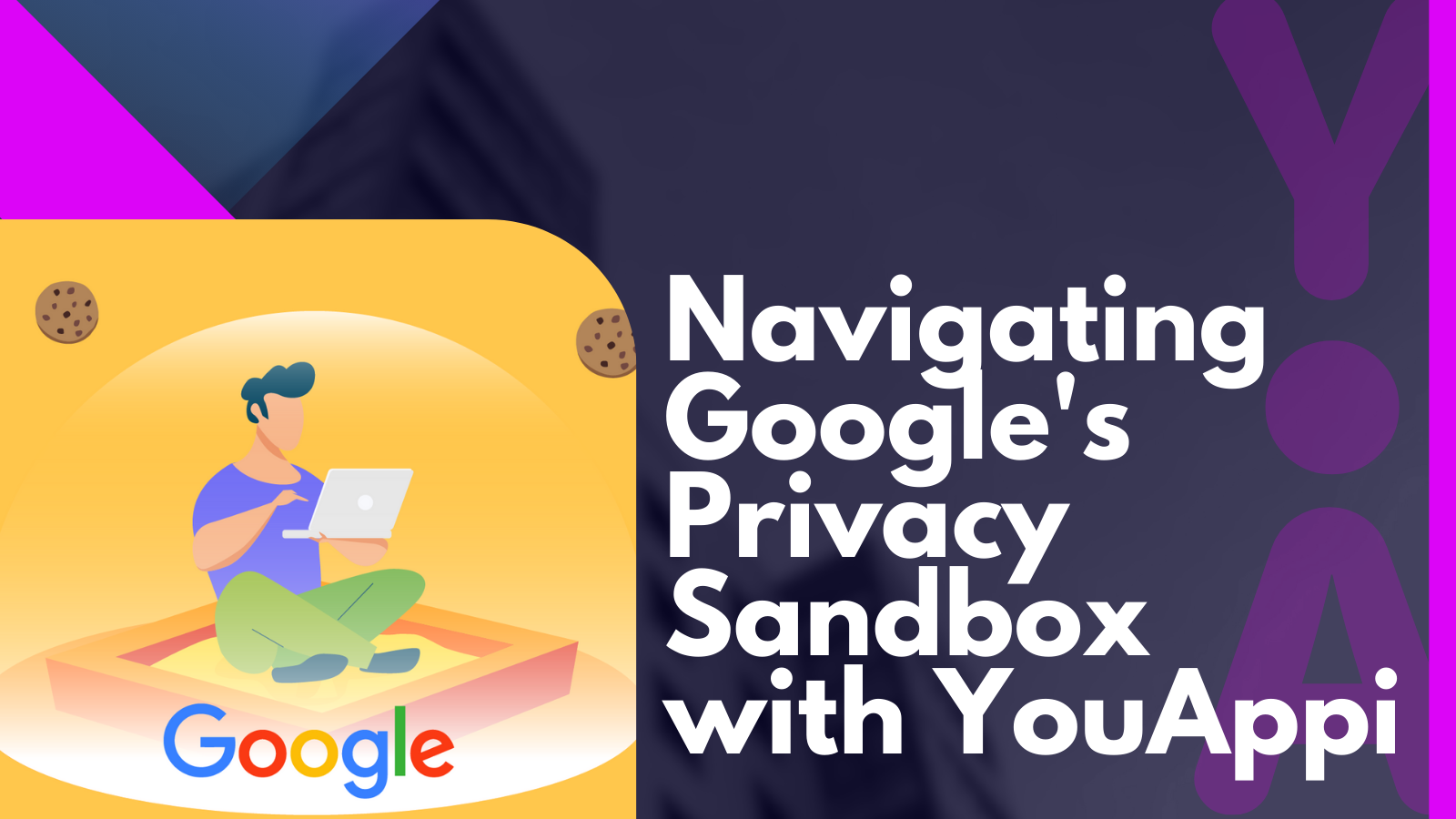Another year, another privacy roadmap. This time we’re giving an update on Google’s latest changes to enhance consumer privacy and protection on Android. Below, learn what you and your marketing team need to know about Privacy Sandbox in 2024.
For a recap of Google’s Privacy Sandbox updates in 2023, read our blog.
What is Privacy Sandbox?
Google's Privacy Sandbox is an initiative to create standards that enable websites and apps to access user information without compromising privacy. It aims to protect user digital privacy while providing companies and developers with tools to build successful businesses.
Key Features of Privacy Sandbox
- Topics API: A consolidated ad-targeting mechanism that matches users' browsing activity to relevant advertising topics without the use of third-party cookies.
- Protected Audience API: An auction-based system that determines which ads are displayed to specific users based on custom audience groups. App developers and previous interactions within the app define these groups, to ensure personalized ad experiences in a privacy-safe manner.
- Attribution Reporting: A solution that aims to replace current measurement methods with privacy-focused alternatives that do not rely on user-level tracking devices like Advertising ID, to enhance user privacy protection.
- SDK Runtime: Provides an isolated process for third-party advertising code to run separately from an app's code. This limits access to app and user data by third-party providers for enhanced security and privacy protection.
Privacy Sandbox on Android
As mentioned above, Privacy Sandbox includes key features affecting the collection and use of third party cookies on Android devices.
Specifically, on Android, Privacy Sandbox seeks to minimize the use of the Google Advertising ID (GAID) by introducing new privacy-first technology and solutions. These mechanisms will provide advertisers with alternative methods to deliver personalized advertising without solely relying on the GAID for tracking and targeting. This will limit the sharing of user data with third parties and operating without cross-app identifiers, including the GAID.
According to Google, these features aim to improve user privacy while still enabling personalized ads and the success of players in the mobile app marketing industry.
Attribution on Android
Within Privacy Sandbox’s Attribution API Framework, there will be two types of reports:
- Event reports: Similar to the way Apple’s SKAN provides postbacks, event reports will provide upper-funnel data (campaign, sub-campaign, creative, click ID, etc.) tie clicks to a small amount of conversion data.
- Aggregated reports: These reports will provide granular trigger (event) data in aggregated form. In other words, the data does not link to a specific trigger or user. Instead, it links to lower-funnel data like revenue, number of purchases etc. These reports will also feature upper-funnel breakdowns such as campaign level and geo.
How YouAppi is Preparing for Google’s Privacy Sandbox
Our team has worked for over a year developing YouAppi’s Retargeting solution to align with Google’s Android Privacy Sandbox environment. This has required collaboration with many partners in the industry:
- Close Collaboration with Google: YouAppi works closely with Google’s Privacy Sandbox team to clarify issues, provide feedback and discuss challenges in the GitHub groups. YouAppi has also been identified as a Privacy Sandbox Tester on Google’s site for collaborating with other companies.
- Development of Test Applications: YouAppi developed test apps for an Android device to exercise a rich set of test cases in the Privacy Sandbox environment. This includes Advertiser’s test app with an MMP’s SDK and Publisher’s test app with an SSP’s SDK. Both test apps are installed on the Android device to test end-to-end retargeting flows. This includes setting customer audiences, rendering an ad after bidding, and winning an auction.
- Partnership with MMPs: YouAppi works closely with leading MMP partners, exercising the Join and Leave of a user to its audiences via the Protected Audience API of the Android Privacy Sandbox. For that, YouAppi uses the MMPs’ test app (Advertiser-side test app, including their SDK) or integrates the MMPs’ SDK into its test app.
- Engagement with Advertiser and SSP Partners: YouAppi discusses with its major advertiser partners the required changes and expected challenges the Android Privacy Sandbox poses, such as effective methods to build audiences and run retargeting campaigns. YouAppi also works with SSP partners to exercise auctions in the Android Privacy Sandbox environment by initiating the ad selection process and providing the necessary information to bid in an auction.
Takeaways
As we navigate the evolving landscape of digital advertising, Google's Privacy Sandbox is a significant step towards enhancing consumer privacy. For app marketers and developers, understanding and adapting to these changes is paramount. Here's what we've learned:
- Privacy-Focused Evolution: Google’s Privacy Sandbox is reshaping how user data is accessed and utilized. This emphasizes user privacy without hampering the digital ecosystem's capacity to deliver personalized advertising.
- Strategic Adaptation: The transition away from GAID on Android necessitates a strategic shift in how marketers approach retargeting and growth.
- Collaborative Approach: YouAppi's proactive collaboration with Google and partners in developing and testing solutions aligned with the Privacy Sandbox signifies the importance of industry-wide cooperation in adapting to these changes.
- Future-Proofing Strategies: Adapting to Privacy Sandbox’s frameworks is not just about compliance; it's about adapting advertising strategies for a privacy-first world, ensuring continued success and growth in the evolving mobile landscape.
Navigate the privacy-first advertising landscape with YouAppi
Contact YouAppi today to future-proof your digital advertising strategies and thrive in the new era of Android privacy.

